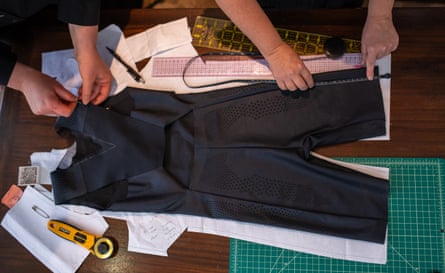Eight seconds. It’s barely enough time for most people to tie their shoelaces. But when you are Faith Kipyegon, and you’re trying to become the first woman to shatter the four-minute mile barrier, those eight seconds constitute a chasm.
But now we know how the 31-year-old Kenyan, who set the mile world record of 4 mins 7.64 secs in 2023, intends to close the gap and emulate Sir Roger Bannister’s historic feat.
On Thursday her sponsor Nike revealed that when Kipyegon makes her sub-four attempt in Paris on 26 June, she will be wearing a special aerodynamic skinsuit with “3D-printed aeronodes”, along with new super spikes, which are even lighter and more propulsive.
The skinsuit, which would not currently be permitted in official World Athletics races, draws on similar technology used by British Cycling and British Skeleton when they dominated the Summer and Winter Olympics between 2008 and 2018.
Crucially, the aeronodes are able to create a “turbulence” effect designed to reduce the amount of wind resistance acting on the body when Kipyegon runs.
“The magic with the aeronodes on the suit and leg sleeves is that it creates a controlled turbulence area,” said Lisa Gibson of Nike’s Innovation lab. “It splits the air in front of Faith and creates smaller eddies behind her to reduce drag.”
Reducing resistance is clearly a key factor in the attempt. A recent scientific paper by Prof Rodger Kram, a physiologist at the University of Colorado Boulder, suggested that Kipyegon could run a sub-four minute mile by using pacemakers deployed in front and behind her to reduce drag.
The mother of one will also be wearing a headband designed to further reduce drag, as well as the latest prototype of Nike super spikes, the Victory Elite FK, which have 3mm more foam and are lighter than the track spikes she wore when winning Olympic 1500m gold last year.

And while most experts remain sceptical that Kipyegon can do it, despite the added technological assistance, the scientist behind her attempt says that confidence is building.
Brett Kirby, who worked with Eliud Kipchoge to help the Kenyan break the two-hour barrier in the marathon, said he understood the scepticism. However he said he was convinced that Kipyegon could go much quicker.
“I’m a scientist and it’s all about thinking critically,” said Kirby, the senior principal scientist at Nike’s sport research lab. “So when I first heard the idea, I was like, ‘man, I don’t know. It sounds really hard to get those eight seconds.’ But when we stepped back and looked at Faith in 2023, and things like her pacing – which may have initially looked optimal – we realised that there was more there.”
“When you start to add on these other pieces of the puzzle, and put them together to make that matrix, then things start to get really exciting,” he added. “You start to get more inspired. You say, ‘Wow, OK, these pieces come together like a really nice system, from the apparel side, the footwear side, the location side, and maybe some tweaks in preparation’. And before you know it, you have this matrix that comes together.”
after newsletter promotion
“And you put all the pieces together, and it slowly builds more and more confidence as we get closer.”

Not everyone in Kipyegon’s team is as cautious. Simon Bairu, her sports marketing partner, believes it is only a matter of time before she makes history. “When she breaks four, she won’t just set a record,” he said. “She’ll change what every girl watching thinks is possible. I don’t think she can do it – I know she will.”
Nike’s experts would not be drawn on just how much of a performance boost Kipyegon might expect from their new technology.
However Carrie Dimoff, of Nike’s Innovation Footwear department, said that Kipyegon’s new spikes had shown greater energy return in testing. Dimhoff also confirmed that while the new spikes had not yet been submitted to World Athletics for approval, as they had been making ongoing adjustments to them, they did conform to the rules.
“The height of the shoe does not actually get any higher,” she added. “We’ve just diverted some of the height from other materials into that energetic air sole design to give Faith more efficient push off and more energy return with every stride.”

.png) 3 months ago
44
3 months ago
44

















































